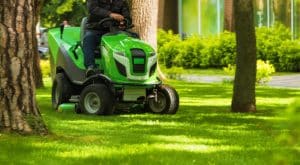The Dangers of Riding Lawn Mowers
 When the average person thinks of a “motor vehicle accident,” he or she usually thinks of a car crash, a collision with an 18-wheeler, or even a motorcycle wreck. The truth is that there are many motorized vehicles that can be involved in accidents, and those incidents can lead to catastrophic injuries.
When the average person thinks of a “motor vehicle accident,” he or she usually thinks of a car crash, a collision with an 18-wheeler, or even a motorcycle wreck. The truth is that there are many motorized vehicles that can be involved in accidents, and those incidents can lead to catastrophic injuries.
Lawn mowers – especially ride-ons – are very heavy equipment and need to be treated with caution. The Texas Department of Insurance (TDI) reported that there are about 35,000 injuries and hundreds of deaths per year that involve lawn mowers. Accidents do happen, but most accidents involving lawn mowers are completely preventable.
Who’s at risk of a lawn mower accident in Texas?
Those who operate the lawn mower always run the risk of a serious injury if they are not properly using the machine. This could include cutting too close to a ledge, hitting a ditch, or even using the machine on uneven ground. Last summer, there was a fatal accident in Gregg County, Texas where a ride-on lawn mower overturned and killed its rider. And just earlier this year, there was another accident around Houston, Texas where a lawn mower flipped and severely injured the 38-year-old woman operating it, which led to her getting airlifted to the hospital.
Despite what you may think, it is not just the person using the lawn mower who is at risk of getting into an accident. A lot of the time, children unexpectedly get in the way. In fact, the National Library of Medicine found that lawn mower accidents are the leading cause of kids’ amputations. In a study done with 142 pediatric patients who were involved in a lawn mower accident, 68.3% sustained an open fracture while 38% needed an amputation. The average age of these patients was only 7.5 years old. What’s even more surprising is that those numbers haven’t decreased in several decades, either.
- A few years ago, there was a tragic accident in Texarkana, Texas. A four-year-old boy’s older sister was mowing the lawn when he tried to jump on top of the running lawn mower; he slipped and was run over by the mower. Although his sister tried her best to save him from getting hurt, he lost three fingers and ultimately had to have one of his legs amputated.
- Another tragic incident involved a four-year-old boy in New Fairview, Texas.. He regularly rode the lawn mower with his grandfather so they could cut the grass together, and that day was no different until the boy hopped off the running mower for an unknown reason. When his grandfather spun around on his zero-turn lawn mower, the boy was right there. He ended up getting pulled under and run over. The boy survived, but he did lose one of his legs and his grandfather severely injured his back trying—and failing—to push the lawn mower off of his grandson.
While these stories are some of the more tragic incidents, it’s important to realize how quickly something tragic like this can happen and how much damage a lawn mower can do.
TDI also reported that 252 landscapers died of work-related injuries in 2019 alone, which mostly consisted of accidents involving a lawn mower. Of the reported landscaper injuries, these people were typically thrown off or fell underneath the equipment. Just a couple months ago, a landscaper worker in Tyler, Texas, became pinned underneath his ride-on lawn mower in a pond after he cut too close to the edge and tipped over into it. Luckily, his coworkers were close and he was able to keep his head above water with their help.
Who is responsible for a lawnmower-related injury?
For the most part, it’s up to the user to operate a ride-on lawn mower safely. However, there are circumstances where manufacturers have put consumers at risk because of a defect in their products.. For example, Kubota recalled one of their zero-turn lawn mowers back in 2018 because its protective structure could loosen and fail to protect the person riding it in the event they roll over. Wherever there’s a risk of injury like that, manufacturers should let the public know.
Employers are required to provide their employees with proper training before allowing them to use big equipment like this. They should know all the ins and outs of the machine, how it operates, how to safely run it, and what to do in case of an emergency. Failure to offer this training could leave them liable for any worksite injuries.
How can people protect themselves—and others—while mowing the lawn?
For a typical homeowner, they should learn all those same things and also teach their children some of the basics. Even if those kids are young, it’s never too early to teach them how to act responsibly around a lawn mower because it can be dangerous and hurt them. Here are some other tips for safely riding a lawn mower:
- Don’t carry passengers. Similar to a car, a lawn mower should only hold as many people as there are seats available—and that’s one.
- Point the discharge chute away from others. If the chute is facing someone, you’re risking grass clippings, rocks, and any other debris flying at a high rate of speed towards them.
- Don’t leave a running mower unattended. This could put someone else more at risk getting hurt if they’re not paying attention. It’s best to turn off the engine when the machine is not in use.
- Avoid backing up. Of course, it’s always good to check behind you first, but there could always be something or someone on the ground behind you in a blind spot.
- Tell others to stay at a safe distance. As you mow the lawn, tell people (but especially children!) to either stay inside or in a designated area that you won’t be working in.
Were you or a loved one injured in a lawnmower accident in Texas? Call Slack Davis Sanger at 800-455-8686, or submit our contact form to schedule a free consultation today. Our offices are located in Dallas, Austin, and Fort Worth.

The firm handles cases involving catastrophic personal injuries and deaths. Our work spans three decades of handling airplane and helicopter crashes, truck and car accidents, oilfield and construction accidents, and other devastating accidents. We try lawsuits throughout the country in both federal and state courts and have recovered hundreds of millions of dollars for our clients. To date, we have handled or tried cases in 47 states, read more about our attorneys and firm.
